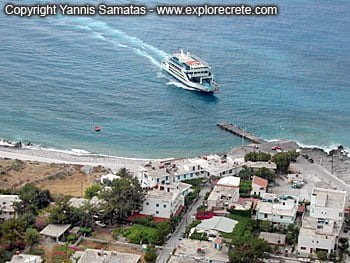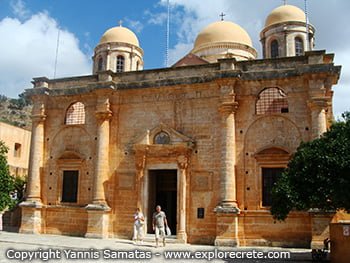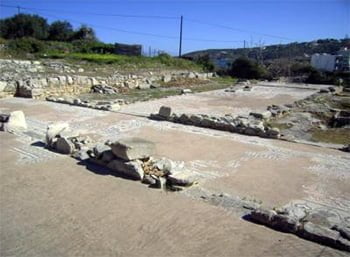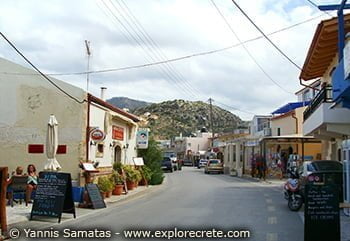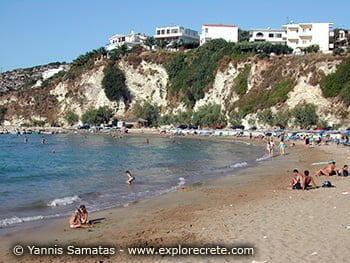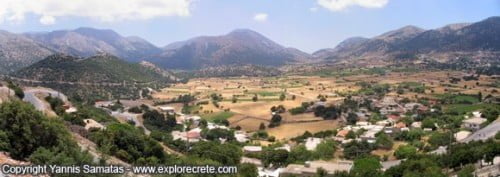History of Kissamos
Ancient Kissamos
Modern Kissamos or Kastelli is a town with a long and rich history. It stands on the site of ancient Kissamos, a flourishing, independent city with its own coinage and extensive trading links.
Ancient Kissamos was the harbour of Polyrrinia. Mentioned by Ptolemy as “Kissamos Polis“, it prospered particularly during the Roman and Byzantine periods, as the many excavation finds in the area show. A Late Minoan vessel was also found in the Kamara area , but it was lost during the German Occupation.
The low hill of Kastelli, on the east side of the harbour, was ideally placed for the establishment of a settlement known as Kydonia. The earliest evidence of human habitation and activity in the area is pottery dated to the Neolithic period (3000-2900 BC).
Kissamos during the Roman period
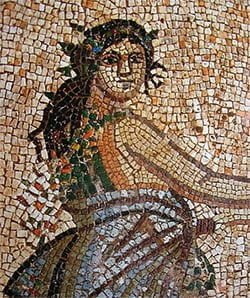
Roman mosaic in Kissamos Museum
Kissamos did not try to resist the Romans and so it managed to gain their favour, in a manner of speaking. The Romans built an aqueduct in the Krya Vryssi (“Cold Spring”) area, as well as roads, temples and villas.
Today visitors to the town can admire many of the finds of the Archaic and Roman period in the well-organised Kissamos Museum, while impressive mosaics can be seen at the archaeological site near the Health Centre.
The Museum contains Roman statues, the most impressive of which are those of the Satyr and the Emperor Hadrian.
The year 66 AD was an important one for Kissamos, as a great earthquake destroyed many buildings.
The final blow, however, came in 365 AD, when the area was almost completely razed by a devastating earthquake.
During the Byzantine period, Kissamos became a bishop’s seat and many churches were built, even on the ruins of Roman temples.
Kissamos during the Venetian period
In 1252 the city and prefecture of Chania were divided into 90 cavallerie and distributed to their new Venetian owners. The Venetians built the wall of Kastelli and laid out the town according to an urban plan, with public buildings along a main street now known as Canevaro Street, which crosses the east side of Kastelli.
The Venetians also built a great fortress in the shape of an irregular pentagon, which contained chapels, prisons, barracks and a well. This fortress gave the name “Kastelli” (“Castle”) to the former Kissamos.
The fortress was used by the Cretans during their risings against the Turks. Parts of the fortress can be seen today, but they are part of the reconstructions undertaken during the Turkish period.
Kastelli was the town where the Venetian nobility chose to build their mansions, in the contemporary Venetian Mannerist style prevalent in the 16th century. They also built an impressive cathedral dedicated to the Virgin, but it was destroyed during the German bombardment in 1941.
Kissamos during the Turkish period
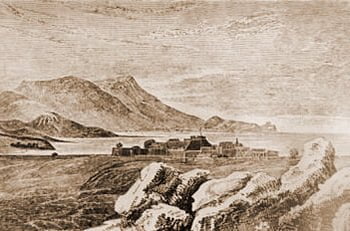
Kissamos in an old engraving
In 1646 the commander of the fortress, Giovanni Medini, opened the gates of the city to the Turks, unable to withstand the siege any longer.
The Turkish occupation was a harsh time for Kastelli, and one of great historical events.
The most prosperous Turkish Cretan families (Cretans who had converted to Islam) lived in the neighbourhood of the former Venetian mansions, leaving their mark on the area in their turn.
Kissamos had gates to the east and west, as well as a third, narrow, stepped gateway to the south, known as the “Skalakia” (“little steps”).
In 1823 the new High Commissioner of Crete, Emmanuel Tombazis, landed at Kissamos accompanied by Dimitrios Kallergis and 600 Cretan fighters, who laid siege to the fortress and forced the Turks to surrender.
Of course, the fortress changed hands several times before the final liberation of Crete. It was last besieged in 1897, when the Christians blew up the Kounoupitsa Tower, forcing the Turks to appeal to the Great Powers for help.
Kissamos in the Second World War
In 1941 Kissamos was bombed, while many German paratroopers also parachuted into the area; none of them escaped. After the fall of Maleme Airfield and the end of the Battle of Crete, the town was looted by the Germans, who blew up the harbour and many houses before leaving in 1945.
© explorecrete.com All Rights Reserved. Reproduction or copying without permission is prohibited.

